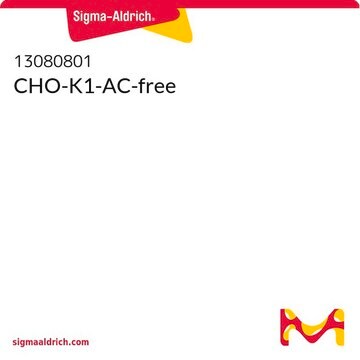CHOK1
CHOZN® CHO K1 Host Cell Line
Suspension-adapted in CD media
About This Item
Recommended Products
description
CHOK1 cell line derived from ECACC CHO K1
Quality Level
shipped in
dry ice
storage temp.
−196°C
General description
Cell Line Origin
Physical form
Legal Information
Storage Class
10 - Combustible liquids
wgk_germany
WGK 3
flash_point_f
Not applicable
flash_point_c
Not applicable
Choose from one of the most recent versions:
Certificates of Analysis (COA)
Don't see the Right Version?
If you require a particular version, you can look up a specific certificate by the Lot or Batch number.
Already Own This Product?
Find documentation for the products that you have recently purchased in the Document Library.
Articles
Understand how considerations such as DMSO concentrations and freezing techniques are key in the successful implementation of high cell density cryopreservation (HCDC).
Cellvento® and EX-CELL® CHO cell culture media and feeds, optimized for monoclonal antibody & recombinant protein production in fed-batch & perfusion
Related Content
Learn more about cell line development and the relevant products you need for this process.
Enhance mAb and recombinant protein performance, efficacy, and stability with precise glycosylation modulation using the Cellvento® ModiFeed platform.
This page describes the use of a small-scale perfusion bioreactor with integrated microfluidic flow control and sensor technologies to predict large-scale processes.
Our team of scientists has experience in all areas of research including Life Science, Material Science, Chemical Synthesis, Chromatography, Analytical and many others.
Contact Technical Service




